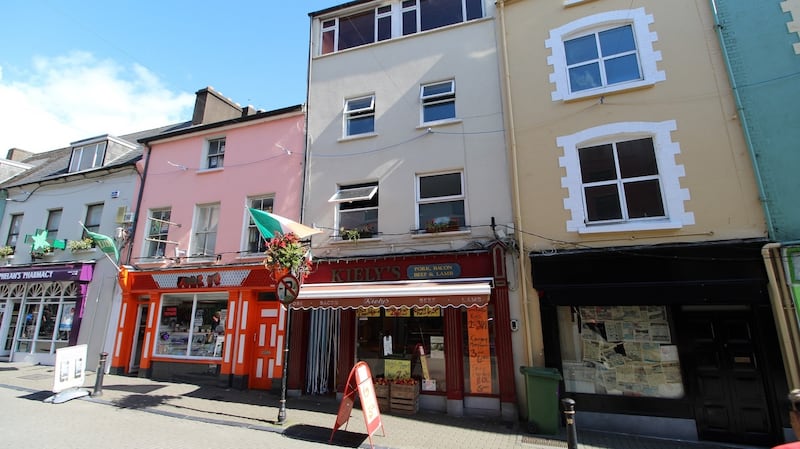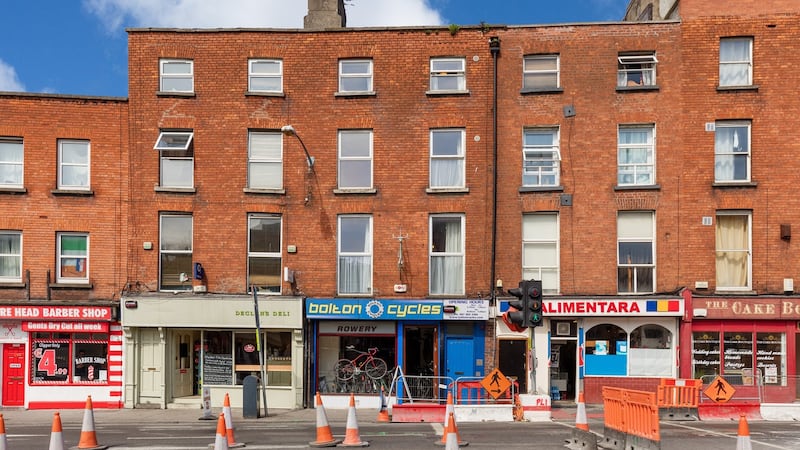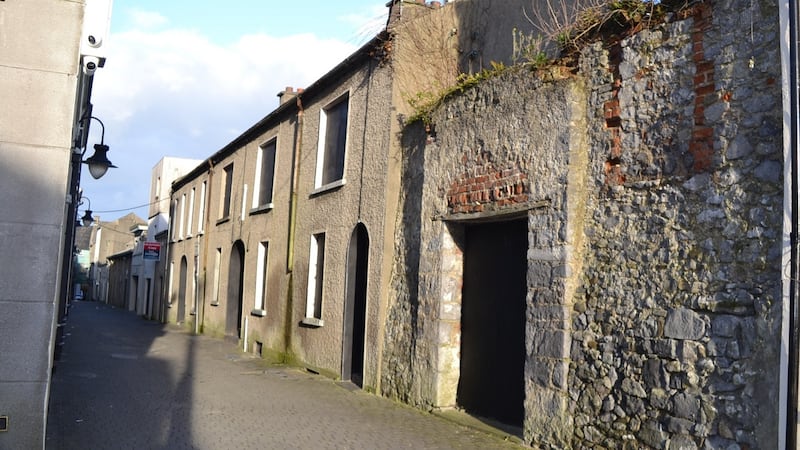As commute times get longer more home hunters are looking to live centrally, giving up on big back gardens and wide open green spaces in favour of less time spent in their cars. With house prices continuing to rise, there is an initiative that will appeal to the adventurous, those with the ability to see potential, to start trawling the still run-down central areas of some of our cities in search of a possible bargain.
The Living City Initiative (LCI) incentivises people to convert commercial premises to residential and to rehabilitate disused buildings and accommodation over the shop for habitation through tax breaks. The scheme was first introduced in 2015 by the Department of Finance, as a tax break for owner-occupiers in certain parts of the inner cities of Dublin, Cork, Galway, Limerick, Waterford and Kilkenny.
But the plan was criticised for its restrictions – properties had to be less than 200sq m in size – which excluded typical Georgian houses, and it was open only to owner-occupiers.

The recently updated version is far more buyer-friendly as it covers houses, old-style flats, shops or indeed any kind of structure that can be refurbished and/ or converted to upgrade its existing accommodation or bring derelict or disused properties back into use. The revised version now also includes the buy-to-let market and commercial properties.
Restrictions remain but the relief covers building works and includes building materials, equipment hire, labour costs, professional fees and painting and decorating. Fixtures and fittings can also be claimed if installed during the refurbishment and if they form part of the fabric of the building. The minimum expenditure to qualify is €5,000. New build costs, such as extensions, are not covered.
How it works
For owner-occupiers there is no upper limit on expenditure in relation to the monies spent. So if, say, you spend €100,000 on the refurbishment of a two-up, two-down, you can claim 10 per cent of the costs of those works, €10,000, as a deduction from your total taxable income each year for a period of 10 consecutive years. How much the actual deduction amounts to will depend on your own tax circumstances and is looked after by Revenue.

Relief for those buying under the rented residential or commercial property schemes is 15 per cent per annum for years one to six and 10 per cent in year seven. The amount of tax relief available under any individual commercial project is capped at €200,000.
"There is huge potential all around Dublin to spot potential," says Mary Conway, Dublin City Council's deputy city planner. "In addition to the tax relief, you get access to a team of experts including planners, architects, fire prevention, building control, conservation and valuers who will advise on planning and development requirements before you even begin your conversion or refurbishment. This service is free."
To qualify for the relief the property needs to have been constructed before 1915. Conway advises would-be buyers to do their own due diligence on this, using the National Inventory of Architectural Heritage Ireland. Commercial properties are not required to be of a pre-1915 construction.
“Using the upper floors as a family unit is one of the easiest ways to navigate the regulations and avail of this scheme,” says Helen McNamara, senior executive officer in Dublin City Council’s active land management. “It would be a great thing to think that families might live over the shop.”
To find properties that fall under the LCI remit, there is an interactive map covering all six cities but to use this you need the specific address of a property to determine if it is within the scheme.

It would be helpful if agents noted the properties that qualified for the scheme in their marketing literature, and one city planner says they have been mailing and calling estate agents asking them to include such information since 2015.
“There was a specific call to action for agents to promote it more and we will be issuing a communication including our guide to the LCI to all our members advising them of the grant and why they should promote this,” says Edward McAuley, head of practice and policy at the Society of Chartered Surveyors Ireland. But for now it remains very much a word of mouth initiative.
How to apply
For commercial relief, apply directly to Revenue. For owner-occupier and rental relief, an application form must be completed, a unique reference number will then be furnished to use to apply for tax relief from Revenue. When works are completed, a letter of certification is required from the relevant council. revenue.ie/en/property/living-city-initiative/
Properties that qualify
Dublin
The area runs from Mountjoy Square in the northeast to the Guinness Brewery in the southwest, and stretches to Hanlon's Corner in the northwest, Kelly's Corner in the south and includes Pearse Square near Dublin's Docklands.
Property for sale
33 Bolton Street, Dublin 1, €850,000. This 293sq m, four-storey Georgian has a bike shop at ground level paying €24,000 annually. Upstairs is a six-bed house. With a separate entrance to the accommodation, the upstairs could work as a one-bed flat at first floor level and a family duplex on floors three and four. Dominic Street Luas stop is a four-minute walk.
Cork
The designated areas in Cork include much of the city centre, Shandon, Blarney Street, parts of Blackpool, MacCurtain Street, St Luke's, Lower Glanmire Road, the Marsh, South Parish, Greenmount and areas of Bandon Road.
corkcity.ie/livingcity
Property for sale
110 Shandon Street, Cork, €210,000. A three-storey, terraced house, above a barbershop which generates an annual rent of €6,000. A separate entrance leads upstairs to the first floor where there are three bedrooms and a bathroom. On the second floor there is a living room, separate kitchen cum diner and a bathroom. The property measures 139sq m and there is an offer of €200,000 currently on the property.
Waterford
Many of the streets included in this scheme cover the historic Viking quarter.
Property for sale
31 Michael Street,€300,000. A three-storey terraced building on a pedestrianised street with a retail unit at ground floor of about 84sq m and three storeys above of a similar size. The 325sq m property is owner occupied and the Apple Market is at the end of the street. Currently there is an offer of €280,000 on the property.
Kilkenny
High Street, Parliament Street, Patrick Street, Ormonde Road, Lower New Street, Friary Street, James' Street, Parnell Street, Kickham Street, Old Callan Road, Gaol Road, Dominic Street, Dean Street, Stephens Street, Vicar Street, Green Street, Wolfe Tone Street, Michael Street, John Street, Maudlin Street.
Property for sale
Numbers 8,9, 10, 11 and 12 Chapel Lane, €450,000. This is a project that requires deep pockets as all five of the two-bed houses in this quiet terrace situated between High Street and Parnell Street need modernisation. In total it offers 450sq m of space and could become four rental units and one to occupy or, subject to planning, one really big space behind the terraced facade.
Limerick
Two areas of the city qualify. The larger area is in the west of the city while a smaller area across the river in Limerick city north is also in the scheme.
Galway
Broadly speaking it covers three parts of the city; in the west it takes in Upper Dominic Street, the Terraces, Henry Street, William Street West and Small Crane, in the southeast it covers the Docks and Dock Road and in the northwest it covers a large area from St Nicholas Street, parts of Lower Abbeygate Street, St Augustin Street, the south of the Headford Road from St Brigid's Terrace to St Brendan's Avenue, Wood Quay, Eyre Street, parts of Francis Street and Upper Abbeygate Street to the junction of Shop Street.










